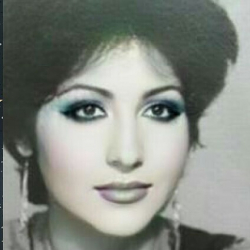Fashion and clothes
Fashion is something we deal with everyday. Even people who say they don't care what they wear choose clothes every morning that say a lot about them and how they feel that day. Clothes say a lot about people. We try to wear things which express ideas and feelings about our life. One certain thing in the fashion world is change. We are constantly being bombarded with new fashion ideas from music, videos, books, and television. Fashion, or clothing style, is always changing. Movies also have a big impact on what people wear. Ray-Ban sold more sunglasses after the movie “Men In Black”. Sometimes a trend is world-wide. Back in the 1950s, teenagers everywhere dressed like Elvis Presley. Musicians and other cultural idols have always influenced what we're wearing, but so have political figures and royalty. The famous French King Louis XIV said that fashion is a mirror. Louis himself was famous for his style, which tended towards extravagant laces and velvets.
Clothes separate people into groups
Fashion is revealing. Clothes reveal what groups people are in. Styles show who you are, but they also create stereotypes and distance between groups. For instance, a businessman might look at a boy with green hair and multiple piercings as a freak and outsider. He dresses a certain way to deliver the message of rebellion and separation, but within that group, the look is a uniform. A style is a reaction to the society we live in. Fashion is a language which tells a story about the person who wears it. "Clothes create a wordless means of communication that we all understand," - according to Katherine Hamnett, a top British fashion designer. Hamnett became popular when her T-shirts with messages like "Choose Life" were worn by several rock bands. There are many reasons we wear what we wear. Protection from cold, rain and snow: mountain climbers wear high-tech outerwear to avoid frostbite. Physical attraction: many styles are worn to inspire "chemistry." Emotions: we dress "up" when we're happy and "down" when we're upset. Religious expression: Orthodox: Jewish men wear long black suits and Islamic women cover every part of their body except their eyes. Identification and tradition: judges wear robes, people in the military wear uniforms, brides wear long white dresses. Fashion is big business. More people are involved in the buying, selling and production of clothing than any other business in the world. Everyday, millions of workers design, sew, glue, dye, and transport clothing to stores. Ads and magazines give us ideas about what to wear, consciously, or subconsciously. “It is plain that the dress of any given period is exactly suited to the actual climate of the time,"- according to James Laver, a noted English costume historian.
fashionable, stylish, trendy, modern, smart, elegant['eligǝnt], neat, up-to-date, out-of-date, cool, casual, extravagant[ik'strævǝgǝnt], attractive, shocking, good -looking
a shopaholic - someone who enjoys buying things a lot
look nice, look friendly, look smart, sporty look (спортивный вид)
to be dressed appropriately
appearance
in the latest fashion
out of style (date) - несовременный
to keep up with the trends, to follow the trends, to wear branded clothes
to copy smbs. style
individuality (to express oneʼs individuality)
try to look like the ideal man
self-definition (the way of … - способ самовыражения)
to match (This shirt matches to your business suit)
torn – поношенный
plain – заурядный
to criticize smbs. style
bell-bottom (jeans, trousers)
a long-sleeve (short-sleeve) shirt
straggly – растрёпанный
to wear things which express ideas and feelings about life
It suits you.- Тебе идет (к лицу)
It fits you. – Подходит по размеру. (The dress is a good fit)
Clothes reflect the social status. Clothes say a lot about people.
I (don't) care what I wear. Fashion shocks.
Shopping for clothes is a good therapy.
What sort of clothes do you like to wear and why? Is fashion important to you? Why?
Do you think it is important to look fashionable? Why?
What is important to you – plain, comfortable and tidy clothes or trendy clothes and brand names?
What do you know about teen fashion?
What is your traditional dress?
What things are important for your image?
Which clothes are in fashion now? Do you follow fashion?
What do you prefer: follow out of date styles or keep up with the trends? Why?
Fashion is an endless popularity contest.
High fashion is the style of a small group of men and women with a certain taste and authority in the fashion world. People of wealth and position, buyers for major department stores, editors and writers for fashion magazines are all part of Haute Couture ("High Fashion" in French). Some of these expensive and often artistic fashions may triumph and become the fashion for the larger majority. Most stay on the runway. Popular fashions are close to impossible to trace. No one can tell how the short skirts and boots worn by teenagers in England in 1960 made it to the runways of Paris, or how blue jeans became so popular in the U.S., or how hip-hop made it from the streets of the Bronx to the Haute Couture fashion shows of London and Milan. It's easy to see what's popular by watching sit-coms on television: the bare mid-riffs and athletic clothes of 90210, the baggy pants of The Fresh Prince of Bel-Air. But the direction of fashion relies on "plugged-in" individuals to react to events, and trends in music, art and books. "In the perspective of costume history, it is plain that the dress of any given period is exactly suited to the actual climate of the time." according to James Laver, a noted English costume historian. How did bell-bottom jeans fade into the designer jeans and boots look of the 1980s into the baggy look of the 1990s? Nobody really knows. Once identified, fashions begin to change.

















